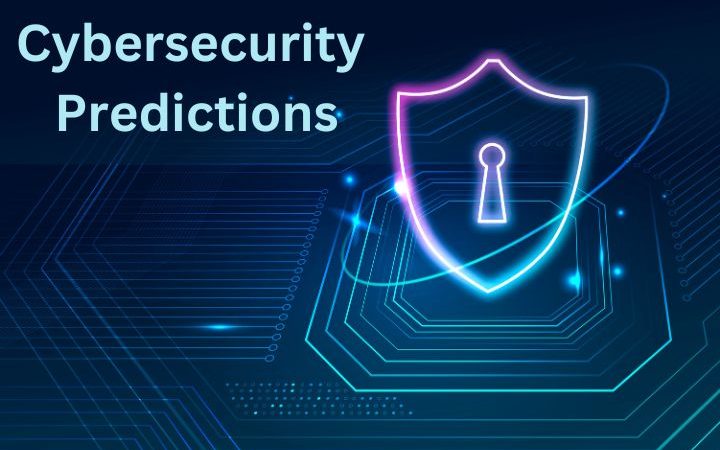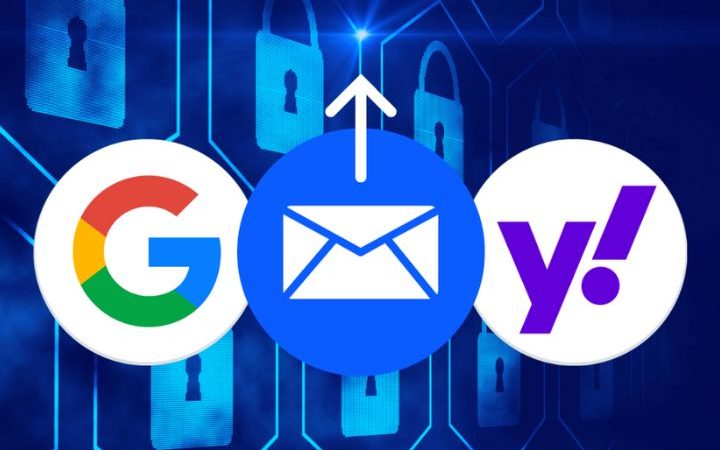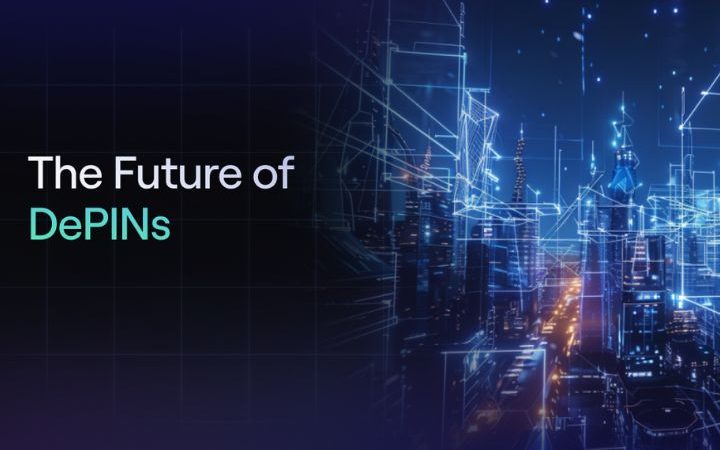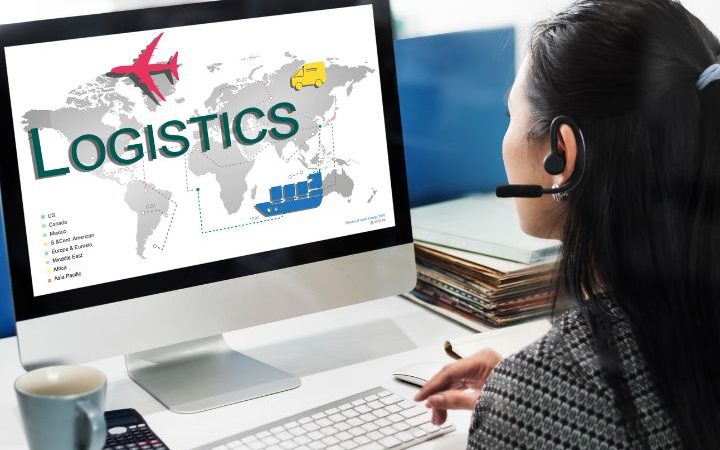The Future Of Software Development Emerging Technologies & Trends

Predicting the software industry’s future can be difficult, given the high expectations from consumers. Market trends will determine software development; you should monitor significant developments within tech and future trends for software development company USA to stay ahead of your competition. A recent study estimated that $672 billion would be spent on enterprise software by 2022. Hence, investing in future trends is advisable to stay ahead of competitors.
By the global COVID-19 epidemic, many businesses have reached a crossroads. From small and large companies alike, both were forced to reorganize their work processes, accelerate IT priorities, and develop technology roadmaps – they realized their future lies with software which would determine their life path.
Over the past several years, companies have been forced to rapidly accelerate their digital transformation efforts to compete effectively in an increasingly challenging market. Rising customer demands for dynamic online experiences have caused developers of digital products to adapt in response, leading to new software trends.
Accelerated Strategy Group’s research showed that 63.33% of respondents to their questionnaire prioritized digital transformation within their company as an overarching goal, particularly cloud migration, contactless services, and DevOps implementation.
Software development was relatively better placed than many industries during this time, yet was nonetheless forced to make cuts, postpone projects and reduce staff. Since 2021 however, growth trends have begun returning positively, and it is anticipated that pre-pandemic status will be reached again by 2024 with an estimated compound annual compounded growth rate of 5-6% CAGR.
Software systems will become increasingly specialized for specific industries, requiring industry-specific standards to ensure compliance, quality and reliability. Software solutions will become more powerful as new technologies emerge that meet user expectations; as a result, the software engineering industry will adapt and grow in response to changing business and user needs.
Software engineers will experience an anticipated 17% surge in demand by 2023 across all industries. Each sector and industry requires software solutions to streamline and enhance their work processes, so having a solid understanding of software engineering could open doors to many different job roles and future careers – an indication of where their future lies.
Software engineering has experienced exponential growth over the past two decades. Organizations are searching for better solutions due to advances in cutting-edge technologies like artificial intelligence, cloud services, blockchain technology and cybersecurity – and this demand for software engineers only seems likely to increase further with each passing day! With innovations coming online daily and this field becoming ever more complex – demand will only continue to skyrocket, and software engineers may become even more in need than before!
Table of Contents
Emerging software development trends
Leaders in the industry have begun adopting software enhancements that will revolutionize software development processes in the future. Innovation pioneers can be divided into two groups: those who lead and wait before adopting anything new or those who jump on recent trends first.
Innovative leaders at the forefront are most focused on:
- Blockchain: An emerging application using cryptocurrency to encrypt records.
- AI: Machine Learning employing artificial intelligence for program creation purposes.
- Deep Learning: An extension of artificial intelligence technology using neural networks as its basis.
The focus of those seeking out their next big thing is:
- Business Process Orchestration: A cloud computing software management system with cross-platform support.
- Lambda/Serverless: This computing provides an approach for developing serverless applications.
- GraphQL: This open-source data manipulation language was explicitly created to power APIs.
- Reactive Programming- Software that facilitates simultaneous reading of multiple data sets simultaneously.
Innovations that seek to capture emerging trends focus on the following:
- Immutable Infrastructure: An approach used to simplify software deployment.
- Microservices: A method for breaking an app into more minor, independent related services.
- Lean: Applying Lean Manufacturing principles to software development via Agile programming).
- API Design: Application Programming Interfaces (APIs) that divide software applications into smaller parts with clear separation of concerns are known as Application Programming Interfaces (APIs).
Software trends vary significantly, yet all share a commonality: all provide industries with new opportunities by developing cleaner, more robust applications and easier to maintain.
Future of Software Development, Emerging Technologies and Trends
The following are emerging technologies that will impact software development trends over the coming decade:
No-Code/Low-code Development
Low code is a visual approach to software development, streamlining every stage of its lifecycle and evolution. This visual tool allows developers to automate each step for efficient software creation.
No-code and low-code platforms offer pre-built components that can quickly be dropped into visual environments for rapidly creating mobile and web apps by both professional developers and non-IT staff. While no guarantees can be given regarding future flexibility, security, or scalability issues with software developed using such platforms, they have quickly become mainstream over the last several years.
Low-code solutions offer several advantages for software development, including making the process faster and simpler. Furthermore, this process has grown increasingly popular as demand outpaces the supply of IT experts.
Cloud Computing
Cloud-native software solutions will become more widely used by software companies for team management, communication and app development. Cloud-native services reside on public, hybrid or private clouds. They are infrastructure agnostic, so any company can quickly adopt them. Cloud computing represents the next wave in data management for organizations as they aim to reduce complexity while prioritizing other goals and improving backup and accessibility for businesses.
Cloud services and tools have become integral to business across various industries, particularly as remote work becomes more popular. Companies must create the necessary infrastructure and support employees in setting up home offices to facilitate this type of remote working.
Facebook, eBay and Fitbit have already recognized the advantages of cloud computing, leading other businesses to adopt it too. Cloud services offer numerous benefits, including cost savings, increased security, ease of use, flexibility, maintenance and seamless working – not to mention tools and analytics for efficient work environments.
Artificial Intelligence & Machine Learning
Artificial Intelligence and Machine Learning are often confused, yet Artificial Intelligence (AI) should be seen as its subset. While AI might initially sound futuristic, it has quickly become one of the most popular software development trends – particularly popular within FinTech applications that rely heavily on computational power and predictive prediction offered by Machine Learning/AI systems.
AI disrupts the traditional software development process, creating more effective techniques which increase productivity while shortening the time to market. AI technology deployment will generate $126 billion globally by 2025, according to Tractica market research estimates; many businesses and developers are adopting and using this technology because of its benefits.
IT and other sectors have seen a dramatic surge in interest in artificial intelligence (AI) technologies like machine learning. AI plays an essential role in both what is developed and its operation; AI helps inform decisions, prioritize projects, create accurate budgets, and rapidly prototype, test, review and support programming processes – to name just some benefits of using these cutting-edge solutions in their development processes.
Generative AI will become increasingly prominent by 2023, creating content from existing files or texts or audio/video/image files. Generative AI technology is used in software development, targeted marketing and pharmaceutical research – and its adoption could account for 10% of data within three years! In software development, this generative AI may take on some robotic programming elements so programmers can focus on more intricate coding work without worry over mechanical components of programming being performed by “augmented programming assistants”.
AI and machine-learning technologies provide essential mentoring support for inexperienced developers to analyze and repair application flaws. Furthermore, these cloud-based integrated design environments (IDEs), intelligent code platforms, and easy deployment control make their use particularly advantageous.
IoT Solutions
The Internet of Things has opened up numerous unexpected but incredible opportunities for businesses and daily lives. It has revolutionized how we interact, led to hardware and software developments, and provided companies with high-quality programs to operate on.
Internet of Things growth is projected at an annual compound growth rate of 10.53 % over the next five years, creating new platforms and things capable of running software. IoT will alter how data is collected and tracked, how users interact across IoT devices, inventory management and shipping operations are affected, and drive the need for AI, analytics and translation of all of this data into insights.
Digitization has led businesses of all kinds to embrace IoT solutions increasingly. IoT technology provides solutions that address security concerns; its implementation helps mitigate breaches that give unauthorized individuals or groups access to company data and control, potentially having severe repercussions for any violation. By harnessing its power through IoT solutions, businesses can leverage them for multiple operations – becoming industry leaders as IoT dominates global operations with its competitive advantages in different forms.
Blockchain
Blockchain is an emerging trend in software development, estimated to reach $5,798 million by 2027 in just the healthcare sector alone. Decentralized apps (DApps), which run across many computers rather than solely one, have also become more prevalent; their decentralized nature provides greater security and flexibility, with intelligent contracts providing more excellent protection.
Blockchain technology is a secure data structure with an inherent level of protection based on cryptography, consensus and decentralization principles that ensure transactional trust. Most blockchains (or distributed ledgers) are organized into blocks, each holding either one transaction or multiple. Cryptographic networks link all new blocks together, making any change impossible; the more you rely on technology in a procedure, the higher its risk is of being exploited – as more software apps emerge, there’s an increasing demand for strong security measures.
Internet of Behavior (IoB)
Internet of Behavior 2023 will bring several exciting emerging trends, the Internet of Behavior being among them. IoB represents an extension of IoT; its central concept involves collecting “digital dust”, or data collected about people and their lives from various sources such as social networks, face recognition systems and wearable medical devices.
Internet of Behavior technology aims to understand human behavior better, using collected data on people to build databases that store them. Businesses use IoB for customer needs prediction, while government organizations can model human behavioral patterns to reduce societal issues. Finally, law enforcement agencies use it for rapid crime-solving or prevention.
Data privacy laws pose the most significant challenge to IoB implementation in each country, so their implementation process will depend on local laws and regulations.
Progressive Web Applications
PWA stands for Progressive Web App and uses tools we are familiar with, such as HTML, CSS and JS but with the appearance and feel of native app software. Users can easily access their pages while their creation can take significantly less time than developing native software would allow. PWA maintenance and development costs for companies are substantially less, leading to more small and startup businesses using PWA as part of their software solution portfolios.
Progressive Web Applications (PWAs) have proven to be an excellent way for many businesses to increase user engagement and experience. PWAs are software solutions that resemble both regular websites and mobile apps in one. Users can access them on mobile phones, tablets and desktop computers- saving companies time and effort when developing an app specifically for each platform separately. With PWAs, they can now take their app with them everywhere without compromising functionality or aesthetics – increasing user engagement dramatically while creating something accessible to more people without compromising functionality or aesthetics – creating something accessible without compromising functionality or aesthetics, which improves user engagement or experience dramatically.
Cybersecurity
Clients expect that any app or software created by software engineers for personal or professional use is safe, secure and risk-free. This expectation arises because many individuals, including corporations working with data, would not want software that may endanger it. Therefore, cybersecurity is integral to studying software engineering as it ensures apps remain safe for individuals and organizations who utilize them.
Cybersecurity has become an increasing responsibility of companies, which must safeguard sensitive data to defend projects from cybercriminals. Traditional security measures are slowly being replaced with modern cybersecurity solutions, and financial organizations need to know their clients’ data is secure behind an impenetrable lock. The cybersecurity industry is growing at a steady rate.
Cyber attacks have evolved to become increasingly sophisticated and dangerous. Businesses must bolster their security to defend against them; cybersecurity will likely play an integral part in future software engineering projects.
Application Programming Interface (API)
Recent years have increased interest in serverless computing and microservice architecture applications. To ensure they can communicate efficiently with each other, an API (Application Programming Interface) facilitates effective communication between applications.
Platform providers have recently been making strides to create user-friendly interfaces, prompting developers to rely more heavily on platforms like Facebook, Google and Salesforce for development.
Here are three of the world’s most widely used API technologies.
- REST is one of the oldest technologies, having been introduced in 2000. World Wide Web technologies such as HTTP are used for client-server communications between client and server, and REST is widely utilized today.
- gRPC: Google created gRPC as a server-to-server data transfer API based on Remote Procedure Calls. Each request in gRPC is structured like a function. Instead of using REST’s textual communication format, gRPC uses binary protocol buffer communication format – thus making gRPC much faster and more efficient regarding service-to-service communications.
- GraphQL: Web client-server connections may require multiple round trips when dealing with complex data structures. Facebook created GraphQL SDK to solve this issue; clients use GraphQL to describe data structure-specific use cases before receiving all their data in one visit.
DevSecOps
DevSecOps is an approach and culture for software development which incorporates security at every stage. DevSecOps represents the next evolution of DevOps; this change shifts the traditional role played by guarantee during code development; typically, security personnel would join later; in the DevSecOps model, they must participate from its inception.
Cyber attacks are increasing rapidly and becoming more costly each year. In contrast, big data has become an indispensable resource for companies, enabling them to perform analytics more efficiently than ever. Unfortunately, however, big data could also be misused to compromise data collections; to make sure this doesn’t happen, DevSecOps ensures your code is not only designed but also developed securely after it has been written – quicker your team can identify vulnerabilities such as those within code, databases and APIs sooner they can address any security threats which arises faster.
Organizations today face ever-increasing threats, with average data breach costs exceeding 4.24 million dollars. Security remains of top importance to most organizations surveyed in our study; DevSecOps was implemented by almost 80% (80%) of them to increase both safety and agility.
Infrastructure as Code (IaC)
Modern application development environments are highly complex, consisting of clusters, microservices and containers, APIs, serverless features and interdependencies that developers must remember when developing apps. DevOps experts must work hard to maintain app stability and security under such circumstances, while developers need to speed up code development and deployment with IaC automated configuration of dynamic computing resources; previously, organizations relied heavily on one or two highly skilled individuals who knew exactly which code depended on another for delivery, creating bottlenecks and dependencies – this practice provides an effective means of eliminating such problems.
DevOps Teams can use IaC to establish a trusted codebase across an entire organization and track whether apps are being deployed according to security standards. Teams using IaC can identify inconsistencies within code and address them quickly. This approach allows an organization to incorporate best configuration practices into its security policies and rules.
Augmented Reality
Augmented Reality End users will find AR software development practical and enjoyable. AR, or augmented reality, has quickly become an essential aspect of digital commerce since the pandemic. According to a PwC survey, consumers had previously preferred shopping in stores; now, digital shopping has grown 45% faster.
Demand for digital commerce continues to surge, creating the need for tools and technologies that enhance shopping experiences more smoothly and enjoyable. Augmented reality can provide shoppers with a pleasant shopping journey.
AR enables e-commerce and mobile apps to provide consumers with more accurate product details, features and alternatives – turning digital experience into real-world experience – for instance, how furniture will fit in their homes or how clothing looks on them.
Conclusion
A Software development company can be highly lucrative and rewarding, enabling billion-dollar brands to flourish thanks to software. Cloud computing, AI and other future trends in software development offer limitless possibilities; you must keep an eye out for new opportunities if you wish to succeed, as this field constantly changes – some tools and technologies will become outdated while others become more advanced over time; businesses must incorporate new tech into their processes to remain competitive in an increasingly digitized world – artificial intelligence, DevSecOps and blockchain are leading this revolution as they will dominate 2023’s parade of software solutions!
Writing software can be a complex endeavor. Hardware, software and technology have advanced rapidly over the last four decades; businesses and entrepreneurs who remained up-to-date on new trends and were innovative have thrived; those who remain complacent have fallen behind.
Understanding software development’s current state and prospects could make all the difference in your business’s success or failure. By understanding its current status and plans, you could implement strategies, processes, finance changes or any other necessary adjustments that increase earnings, gain industry leadership or achieve commercial success. Companies often search online for available developers since so few exist on-site.
Also Read : Best Video Conferencing Software






